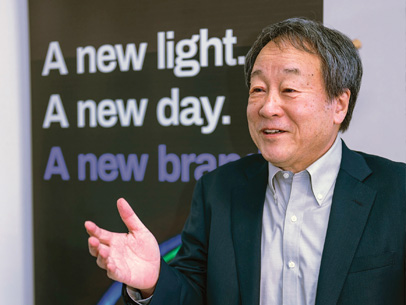
At the end of March and beginning of April, I was at Optica’s headquarters in Washington, DC, to attend the society’s Leadership Conference. The last time I attended this annual event was 12 years ago, when the conference was still held in early February. That year saw a worldwide wave of cold weather, with heavy snow in many places—including both Washington and Tokyo. I arrived at Dulles Airport a day late; many flights were unable to land in Washington and were rerouted to different airports.
Since then, Optica has shifted the Leadership Conference from winter to spring in Washington—but nevertheless it was cold again this year when I arrived, reaching –4 °C with a brisk wind. Whatever the weather, I was happy to see Optica’s headquarters, renovated outside and inside several years ago, with modern glass-walled conference rooms and offices that created a pleasant working and meeting environment.
Although the COVID-19 pandemic kept the Leadership Conference from being conducted in person in 2020 and 2021, it remains the most important meeting for society governance and planning. And this year, while some volunteers were still unable to attend in 2022 due to quarantines or travel restrictions, many came to Optica headquarters in person. This year’s conference drew 102 volunteers, including members of the Board of Directors and other councils and committee members, supported by some 70 Optica staff members.
Those attendees took part, from early morning to late at night, in meetings and stimulating discussions of current issues and future challenges for Optica and optics/photonics community. The conference also featured a “Level-Up Leadership” workshop for early-career leaders (such as the Optica Ambassadors) the weekend before the main conference, and a plenary lecture by John Mather, the astrophysicist, Nobel laureate and Optica Honorary Member who is the NASA science lead for the James Webb Space Telescope.
I attended meetings of the Optica Executive Council, the Board of Directors and many other councils, and facilitated several meetings with tremendous help from colleagues and staff. I enjoyed conversing face to face with people—not only in meetings but at breakfasts, lunches, breaks and receptions—whom I had previously known only through the computer screen. The Leadership Conference convinced me, once again, that it is best to talk to people in person. I thank all of the council and committee members and directors who participated in this year’s conference, in person or online, and to the staff who prepared and organized such a successful event.
During the conference, I was pleased to see the cherry blossoms that were blooming in front of the conference hotel. Every spring, the newspapers in Japan publish daily and weekly forecasts of the blooming of cherry blossoms in various regions—just like a weather forecast. This spring, I missed the cherry blossoms in Tokyo—but fortunately I was able to enjoy them in Washington.
Since cherry blossoms bloom only one week out of the year, Japanese people consider them fragile and ephemeral as human life, and greatly cherish them. We are taught not to cut the branches of the cherry tree. At a time of uncertainty and conflict in the world, the blossoms are a reminder that the globe we live on is the only one we have.
I would welcome your thoughts on this message or other topics at ideas@optica.org.
—Satoshi Kawata,
Optica President
